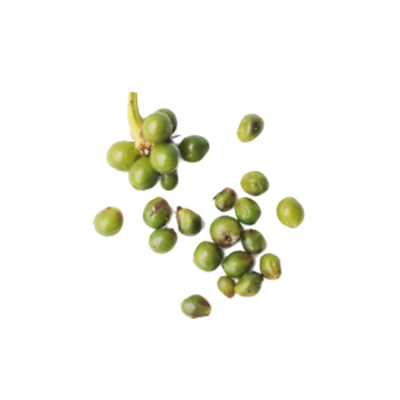Hedge flower
Lantana camara L.
Verbenaceae
Location in our garden
Principal



Synonym
Camara vulgaris Benth.
Habitus
Shrubs. A medium-sized perennial, evergreen, aromatic shrubs, can grow from 2 to 5 m tall.
Part Used
Leaves
Flowers
Roots
Growing Requirements
Full Sunshine
Need Shade
Habitat
Riverbanks
Grassland
Overview
Hedge flower is a native of tropical America (Mexico and southern America), widely used in domestic medicine and provides an abundance of organic matter which can be used as mulch material. The plant has an extensive root system and is often planted for erosion control. The unripe, green berries can cause vomiting, diarrhoea, dilated pupils and laboured respiration if ingested and the leaves may cause dermatitis.
Vernacular Names
Ma ying dan (Chinese), Corbeille d’or (French), Wandelröschen (German), Shichihenge (Japanese), Bunga pagar (Malaysia), Kantutay (Philippines), Cinco negritos (Spanish), Kaam kung (Thailand), Bông ổi (Vietnamese).
Agroecology
Hedge flower has succeeded in areas where the annual rainfall is around 750 mm, between the latitudes 45 °N and 45 °S and an altitude of up to 1,400 m. Grows best in open, unshaded situations, but tolerates moderate shade. Grow best in moist, well-drained soil, that’s slightly acidic, but they can survive in drier conditions. Drainage is important as they don’t live as long with wet roots.
Morphology
- Root - the system is very strong with the main taproot and a mat of many shallow side roots.
- Stems - quadrangular, sometimes having prickles.
- Leaves - oval or broadly lance-shaped, 2-12 cm in length, 2-6 cm broad, a rough surface and a yellow-green to green colour.
- Flowers - small, multicoloured, in stalked, dense, flat-topped clusters to 4 cm across.
- Fruit - a round, fleshy, 2 seeded drupe, about 5 mm wide, green turning purple then blue-black (similar in appearance to a blackberry).
- Seeds - single hard, light brown, egg-shaped, stony (2-4 mm long) at its center.
Cultivation
- Propagation is by seeds and stem cuttings.
- This plant is very easy to grow and develop, so it is potentially invasive in various habitats.
Chemical Constituents
- Essential oil, volatile oil (lantanol), alkaloid (lantanine), toxic triterpenoids, steroid, (lancamarone), oleanolic acid, phenolics, terpenoids, other minor compounds (phytosterols, saponins, tannins, phycobatannin), flavonoids, glycosides, anthraquinone, verbascoside, lantanoside, linaroside and camarinic acid.
Traditional Medicinal Uses
- The stem, root and leaves contain many of the bioactive compounds responsible for various therapeutic applications such as cancers, chicken pox, measles, asthma, ulcers, swellings, eczema, tumors, high blood pressure, bilious fevers, catarrhal infections, tetanus, rheumatism, malaria, antiseptic, antispasmodic, carminative and diaphoretic. Besides this, it has some toxic effects by accidental ingestion among the livestock.
- Extracts have shown antimicrobial, fungicidal, insecticidal activities, refrigerant, antifebrile.
- The leaves are antiphlogistic, anti-dermatosic, diaphoretic, febrifuge, pectoral, stimulant, tonic and vulnerary
- The flowers are haemostatic.
- Lantana essential oil is sometimes used for the treatment of skin itches, as an antiseptic for wounds, and externally for leprosy and scabies. It is applied as a poultice on rheumatic joints.
- The decoction is used to treat influenza, cough, mumps, incessant high fever, malaria, cervical lymph node tuberculosis, asthma, toothache, headache, inflammation, gonorrhoea and leucorrhoea.
- A decoction of the dried flowers is used in the treatment of haemoptysis and pulmonary tuberculosis.
- An infusion of the leaves and flowering tops is used in the treatment of fevers, constipation, tuberculosis, catarrh and bronchitis. Combined with the leaves of Cymbopogon citratus, they are used as an infusion to treat colds, high blood pressure and malarial fever. Externally, the leaves and stems are used as a wash to treat dermatitis, eczema, pruritus, measles and chickenpox rashes etc. They are applied as a poultice to treat sprains, wounds and contusions
- A decoction of the bark is used as a treatment for fevers.
Part Used
Reference Sources
- Jumiati, Andarias, S.H. (2020). Morfologi jenis tembelekan (Lantana camara L.) di beberapa wilayah Kepulauan Buton. Majalah Ilmiah Biologi Biosfera : A Scientific Journal. 37(3): 152-155.
- Lonare, M.K., Sharma, M., Hajare, S.W., Borekar, W.K. (2012). Lantana camara: Overview on toxic to potent medicinal properties. IJPSR 3(9): 3031-3035.
- Kalita, S., Kumar, G., Karthik, L., Rao, K.V.B. (2012). A review on medicinal properties of Lantana camara Linn. Research J. Pharm. and Tech. 5(6): 711-715.
- Jagtap, S., Katariya, T., Pharate, M., Najan, A. (2018). A review on medicinal properties of Lantana camara Linn. 7(9): 288-294.




